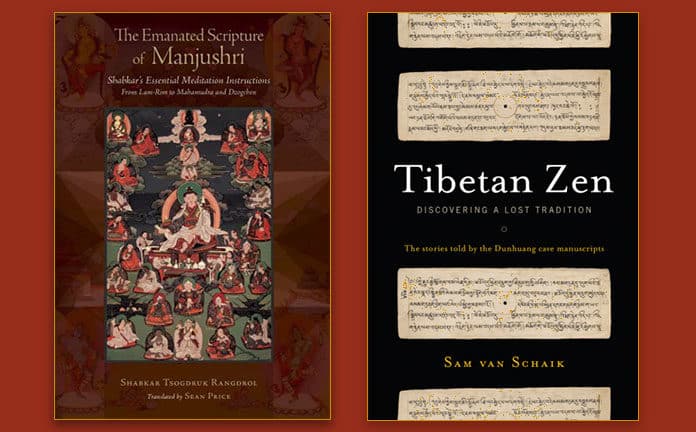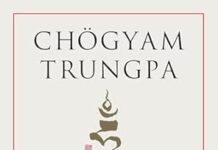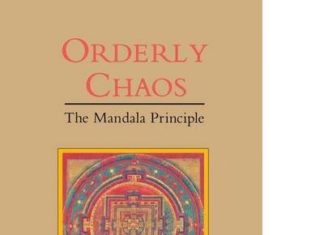
The issue of sudden, instantaneous realization or gradual path as an approach to Buddhist practice has a long history in Asia, with considerable spiritual and historical consequence. Although the context and specific concerns around this subject were no doubt culturally and spiritually different in ancient Tibet and China, the same dynamic presents itself today, as Buddhism adapts in the West. In particular, many are enamored by or are marketing the possibility of a “quick path”, “enlightenment without effort”, or “instantaneous realization”. Combined with modern Western proclivities toward “the quick fix”, convenience, expediency, and ease, traditional expressions and teachings from Zen, mahamudra and dzogchen can be fraught with misinterpretation and appropriation.
Or on the other hand, to some a gradual approach to the path might suggest a pious, plodding, ritualized and moralistic (dharmic-correctness) approach to buddhist practice, as though somber puritanical religiosity had been morphed into Buddhist practice, accompanied by a fascination with culturally Tibetan/Chinese/Japanese, etc., forms of religious practice. As the following two books demonstrate, it is easy to misread the meanings of both gradual and instantaneous, to side with one or the other, and to assume a firm distinction between the two.
In approaching this issue, a review of two books is engaged:
The Emanated Scripture of Manjushri: Shabkar’s Essential Meditation Instructions, by Shakbar Tsogdruk Rangdrol, translated by Sean Price (Tsadra Foundation and Snow Lion Publications, 2018), and Tibetan Zen: Discovering a Lost Tradition, by Sam van Schaik Snow Lion Publications, 2015).
In many ways the two books being reviewed in tandem here are vastly different in character, idiom, and approach. One might assume that each attracts a very different readership as well. Yet each in its own way provides a valuable approach to this seminal issue of gradual and instantaneous enlightenment in Tibetan Buddhism and in both Chinese and Tibetan Zen. This question is pertinent to Buddhist practice altogether. It can influence how one engages in practice over a lifetime (which is not necessarily so instantaneous!)
The Emanated Scripture of Manjushri: Shabkar’s Essential Meditation Instructions, translated by Sean Price / Gelong Tenzin Jamchen, is a work by a renowned accomplished yogi regarded as a rebirth of Milarepa, Shabkar Tsogdruk Rangdrol (1781-1851 CE). Shabkar is best known for his brilliant songs of spiritual realization and instruction, and his consummate repertoire of songs, writings and teachings (current tally, 180 works), most of which arose spontaneously in his mind and voice in the midst of years of retreat. What enabled such effulgent and abundant eloquence, as suggested by Erik Pema Kunsang in his introduction to The Flight of the Garuda, was ”a result of the attainment of realization and ‘untying the knot of the throat chakra.’” 1
Shabkar’s work is translated by a dedicated Buddhist practitioner and monastic, Sean Price / Gelong Tenzin Jamchen, who lives firmly within the tradition and practice of that which he is translating. He walks his talk.
This particular work is a brief compendium of the entire Buddhist path and fruition, a lam rim (stages of the path) work in both prose and poetic form and arranged in accord with questions and requests from Shabkar’s students. As with all lam rim works, it is adorned with a rich abundance of quotations from traditional texts that work in tandem with Shabkar’s own exquisite songs. It progresses through themes classic to lam rim literature and approach: renunciation, the necessity of a spiritual teacher, the preciousness of human existence, ethics as the basis for a spiritual path, compassion, relative and absolute bodhicitta, the bodhisattva vow, mind training, the meditative path of shamatha and vipashyana, and culminating in mahamudra and dzogchen, with their spontaneous and instantaneous flourishes. He then concludes with highly practical chapters on “How to Prepare for the Bardo,” “The Benefit of Retreat,” and “Encouragement to Adopt A Nonsectarian Outlook” (a Ri-mé anthem). This is a jewel of a book for the Buddhist practitioner as well as a newcomer who would like to know the basic character and trajectory of buddhist spiritual practice. It is precise yet inspiring, instructive and eloquent. And it is presented in the form of a direct interchange of Shabkar with his students, in song, it has a freshness and vitality that makes it more “user friendly” and engaging than longer and more arduously categorizing and detailed lam rim texts…at least those in more difficult or overly academic translations.
Chogyam Trungpa Rinpoche once remarked that what was missing in the English translation (by Herbert Guenther at the time) of Gampopa’s classic lam rim text The Jewel Ornament of Liberation, was Gampopa’s sense of humor, noting that in the Tibetan, Gampopa is really funny!2
Tibetan Zen: Discovering a Lost Tradition by Sam van Schaik, is an academic work by an accomplished scholar who specializes in the translation and exploration of texts from the caves of Dunhuang in Central Asia, where a treasure trove of ancient texts dating from the ninth and tenth centuries survived the ravages of desert sands, political upheavals, and time. His style is decidedly academic and fastidiously precise and investigative, yet he is clearly educated in and sensitive to the perspectives of Buddhist meditation practice. And he is a good deal more readable than many academics. His virtuosity in scholarship combined with his role in bringing to daylight previously undisclosed very early records of Tibetan history and religion bring to the reader a unique and rich perspective with which to read the translated documents.
Van Schaik includes translations of works by indigenous Tibetan and non-Tibetan sources (an Indian Mahayana master, Chinese Ch’an/Zen masters and a Korean master). He precedes each translation with an introduction to the particular text, placing it in the context of Tibetan history, literary genre, use for actual practice (both ceremonial and meditative), and use as an aid to teaching. Though the book Tibetan Zen is decidedly academic in style, its translations of Zen works provide surprising and brilliant instruction to the practitioner of Buddhist view and meditation. The immediacy of Zen dialog and instruction steps right out from thick academic underbrush into clear, lucid expression.
Van Schaik chooses to employ the Japanese word “Zen,” due to its popular recognizability, even though the book is really about the influence of Chinese Ch’an (which the Japanese translated into “Zen” and which would linguistically be samten in Tibetan, dhyana in Sanskrit.) It means meditation. It refers to traditions of Buddhism based in meditation, or “meditation schools”. So he coins the unusual but intriguing term “Tibetan Zen.”
Whereas van Schaik provides an array of different Zen writings from different masters and on varied subject matters addressed in the early manuscripts (arranged under the headings Masters of Meditation, Teachers and Students, Encounters With Emptiness, Debate, Observing the Mind, Funerals and Miracles, Zen and Tantra, and others), for the sake of this review, we will engage the most famous Ch’an/Zen figure in Tibetan chronicles, Moheyan, and keep to the topic of instantaneous and gradual enlightenment.3
Now to bring these two books to bear on the subject matter:
Lama Shabkar, author of The Emanated Scripture of Manjushri: Shabkar’s Essential Meditation Instructions is famed for his dzogchen realization and spontaneous songs pointing directly to the fundamental nature of mind and all phenomena. In many ways his pith instructions typify a more instantaneous enlightenment approach, reflecting the fruitional4 perspectives of dzogchen and mahamudra (both also have gradual paths). Yet this particular work of Shabkar demonstrates the necessity of the gradual approach if one is ever going to have a genuine experience and insight into the fruitional views of mahamudra and dzogchen. As translator Sean Price quotes Shabkar in his introduction:
These days some people say, ‘There is no need to expend great effort on the preliminary practices. What’s the point of so much complication? It’s enough just to practice Mahamudra devoid of all elaboration.’ Don’t listen to such nonsense. How can one who hasn’t even reached the shore talk about the sea?
For those who are most familiar with Shabkar through his highly fruitional songs of pith instruction in The Flight of the Garuda, such a quote from Shabkar, the great realized dzogchen yogi, may seem surprising. This entire work dedicated to the gradual path, The Emanated Scripture of Manjushri, may seem ironic. Yet it is worth keeping in mind that Shabkar, who began his dharmic career as a Gelukpa monk, was also an avid student of Tsongkapa’s Lamrim Chenmo, the primary work of the Geluk tradition on the stages of the path. Throughout his life, Shabkar deferred to the Lamrim Chenmo whenever he got stuck in his practice and understanding. Shabkar references the Lamrim Chenmo repeatedly in The Emanated Scripture of Manjushri, and it provides the template for the entire work.
Throughout his life, then, Shabkar combined the fruitional teachings and realization of dzogchen and mahamudra with gradual path teachings and practices. Thus Shabkar, in his own life, practice, and realizations, embodied a Ri-mé spirit of non-sectarian Buddhism, studying all the Tibetan schools, bringing together the teachings of the Nyingma, Geluk, and Kagyu lineages in his own practice, and synchronizing the gradual and instantaneous approaches to practice and realization.
Tibetan Zen comes at the issue more historically and literarily, through analysis of translated documents in terms of how they were actually used in practice, and in terms of clarifying their meaning against a back-drop of later Tibetan characterizations.
According to popular Tibetan historical accounts reaching back to the 17th Century, during the eighth century, in the formative years of Buddhism taking root in Tibet, there were two principal influences, Indian Buddhism and Chinese Ch’an/Zen Buddhism.
The Indian Buddhist approach, brought to Tibet by Shantirakshita, Kamalashila and others, stressed a gradual path consisting of the accumulation of merit and wisdom, and a gradual purification of confused habitual patterns and emotions, eventually leading to Buddhahood. (Although it should be noted that the instantaneous enlightenment approach also has roots in Indian Buddhism, in the Prajnaparamita literature, Mahamudra, and Ati).
The Chinese approach, as embodied in Ch’an/Zen Buddhism, emphasized instantaneous enlightenment, in which enlightenment is a suddenly arising spontaneous realization, attainable by a single meditative method, free of any relative reference points and replete with all the qualities of Buddhahood. Any attempt to cultivate it or develop it, such as through the practice of the paramitas, is itself conditioned, and thus a fruitless, unenlightened pursuit.
According to the official or popular Tibetan history, then, Tibet was faced with a choice of these two emphases and directions. The story goes that in order to resolve this issue, and thus pave the way forward for Buddhism in Tibet, a debate was convened by King Trisong Detsen, the Great Debate of Samye. Kamalashila, the Indian proponent of the gradual approach, faced off against the Chinese master Hwashan Mahayana (identified by van Schaik as Moheyan), representing the instantaneous enlightenment approach. The “official” story says that Kamalashila won the debate, and thus the gradual path of Indian Buddhism was adopted by Tibet, and the sudden path Ch’an/Zen proponents were summarily expelled. And the rest, so it goes, is history.
It is interesting to note that Chögyam Trungpa Rinpoche, when asked during a 1970’s Naropa Institute class why the debate was resolved in favor of the gradual path, answered that the instantaneous enlightenment proponent “did not understand the profundity of the gradual path.”
Van Schaik, however, provides textual support for a very different view of events, drawing from the Dunhuang manuscripts and other historical sources. He observes that the Great Debate of Samye was a politically motivated story only consolidated “probably in the 11th and 12th Centuries” by a Tibetan clan seeking to cement its role on the establishment of Buddhism in Tibet. According to van Schaik’s exploration of the influence of Ch’an/Zen in Tibet, the influence and debate lasted years, and was not the result of a single debate. Van Schaik indicates that Ch’an/Zen influence only waned in the 16th Century, long after its supposed 8th century dismissal. And that it had far more influence on Tibetan Buddhism than officially acknowledged.
Tibetan Zen then proceeds to provide translations demonstrating this early and continuing influence of Ch’an/Zen in Tibet. In the process, it also demonstrates that there was a distinctive Tibetan Zen. Toward the end of his book, he explores the interactions of Ch’an/Zen teachings and teachers with those of Tantra and dzogchen. He provides the case for the extensive interfusion of Zen, Tantric, and dzogchen teachings and practices, suggesting at one point, “It looks like Zen and atiyoga were performing similar functions at this time, providing the contemplative context to tantric sadhana practice.”
Overall, he suggests, “we are seeing the transmission of texts and teaching lineages without the firm distinctions imposed by the later traditions.” This is an indication of a very early Ri-mé, non-sectarian, spirit in Tibet, which included Indian, Tibetan, Nepali, Chinese and Korean influences and teachings. And, as we see through van Schaik’s book, this process engendered a highly creative debate as well as a blending of the gradual and instantaneous enlightenment approaches.
One poignant passage in van Schaik’s book, from a description of an ati teacher, portrays the coexistence of sudden and gradual in the image of a garuda, a mythological bird that is born fully-developed from its egg, then soars through space in a single bound, representing the dynamic of sudden realization:
What is a master who teaches ati yoga like? A great garuda who cuts through the sky yet is aware of all living beings, clarifying the vehicles individually, yet cutting through space. ‘Clarifying’ means that he teaches the great meaning without mixing anything up. Like the sky-soaring garuda, he draws forth the greatness of the meaning, while teaching the divisions of the paths that one should traverse.
In Moheyan’s Introduction to Instantaneous Meditation, translated by van Schaik, Moheyan points to conceptualization as the root of the worldly cycle of birth and death. He instructs that in meditation, one encounters this conceptualization, looks at it, and seeing it yet not becoming ensnared in it, discovers it has no real nature, and thus ignites the wisdom of non-thought. He calls this meditation “instantaneous tathagata meditation”, or “observing the mind.”
As regards method, Moheyan states:
Some say it is not possible to engage in meditation without a method; so what meditation method should one practice? A person who has renounced all meditation sits in non-thought; this is the method by which one engages in meditation in the greater vehicle.
This, then, is the spontaneous, instantaneous approach to practice, one might say being “suddenly free from fixed mind”, yet not something different than practice, dispelling any notion that the spontaneous approach precludes practice or effort, or a gradual path. Rather, it is pointing to how one practices in accord with the ultimate wisdom of a Buddha. And he notes that if one can become enlightened all at once (and those are fewer, as tradition says, than stars in the daytime sky), great! (And one cannot fake this!) But if not, one needs to engage the methods and contexts of the gradual path…that’s what they are for!
Moheyan instructs, “If you experience the movements of the deluded mind and do not conceptualize or follow them, then each thought is liberated as soon as it comes. This is the correct meditation.” This passage dispels the notion that the spontaneous, instantaneous approach is the suppression of concepts, a critique that was employed by some Tibetans against the instantaneous path approach. Rather it directs one to experience and see concepts nakedly, and by doing so they will self-liberate. Projected forward in time, this is right out of the Shabkar’s Mahamudra and Ati playbook!
Moheyan goes on, in another document, to demonstrate how the six perfections (paramitas) are spontaneously present in instantaneous enlightenment, as are all the qualities of buddhahood. He thus, in this and other ways, pays special attention to the harmonization of instantaneous meditation and gradual practice. As van Schaik observes, “The texts of Moheyan translated here show a similar concern with harmonizing the doctrine of single method (instantaneous tathagata meditation) and instantaneous result with the existence of various practices and the need for a graduated approach.”
Coming from different angles and very different styles then, both these books converge on the seminal issue in Buddhist view and practice of whether enlightenment is instantaneous or gradual. Far from being a rarified issue pertinent only to scholars and/or meditators, the question defined the trajectory of Buddhism in Tibet, culturally, spiritually, and politically. How, then, can we draw lessons from this history and its vital manuscripts to inform how we might approach similar issues today?
Many years back, during a visit to Colorado by Chagdud Tulku Rinpoche, the Nyingmapa dzogchen yogin and meditation master who spent the later part of his life implanting those teachings and practices in the West, I was an attendant to Rinpoche. After serving him lunch one day, there was a gap in his schedule, and I thought to ask him a brief question stemming from a group study I was involved with of a translated dzogchen text. Rinpoche abruptly interrupted me and shouted “You should not be reading that book!” Taken aback and feeling a bit bruised, I slithered off to other duties. A while later, as I served tea to Rinpoche, he said to me that the reason he so vehemently declared what he had was that this book had the power to ignite realization. And that traditionally there is an entire preliminary practice to be done prior to having access to that book. And that it requires proper teaching and transmission from a lineage lama to be engaged. He said that without this preparation, if one reads the book, one would only conceptualize its teaching, and thus waste a precious opportunity forever for the book to awaken one to realization.
Despite an abundance of opportunities these days to study and practice with authentic meditation traditions of Zen and Tibetan Buddhist lineages, one can only wonder how much of modern fascination with dzogchen, mahamudra and Zen is conceptualized!
If the non-duality of gradual and instantaneous is a two-sided coin, then the other side of the coin from the instantaneous approach is that the instantaneous approach to realization actually gives birth to the so-called gradual approach. Said another way, the enlightenment of the buddha gives rise to the 84,000 dharmas, or methods for enlightenment.
Acharya Kelsang Wangdi, director of the Kamalashila Center for Study and Meditation in Berlin, recently observed, during a talk on abhidharma in Boulder, Colorado, that each and all of the Buddha’s teachings involves a realization that accompanies the particular teaching, regardless of the perceived level of the teaching. Otherwise, he noted, it would not be a teaching of the Buddha. This observation suggests that each time the Buddha taught, or for that matter any enlightened being teaches, whether later classified as a gradual or sudden approach, or a greater or lesser vehicle, the power of the teaching comes directly from and as an expression of the enlightened mind and speech of the realized person. Thus it is in fact a direct embodiment of and conduit to realization. This is what is sometimes referred to as the ekayana, the one yana/vehicle. Consequently, it is in the midst of any particular teaching and practice of the Buddha that instantaneous realization occurs. This is the conflation of gradual and sudden.
The Emanated Scripture of Manjushri decidedly dispels the notion that there is a sudden path free and clear of a gradual path. Tibetan Zen demonstrates the enduring influence of instantaneous approach Ch’an/Zen on Tibetan Buddhism, even its official gradual path predilection. Van Schaik shows us how even among the Ch’an/Zen lineages, there was a lively and creative consideration of the issue of instantaneous/gradual, and that such great masters as Moheyan sought to harmonize the two. Perhaps this is what Trungpa Rinpoche was referring to as “the profundity of the gradual path.”
Both these books suggest that practice is essential. Neither of them suggests that one can just randomly click into enlightenment, even if informed by profound pointing out pronouncements from a tradition or alluring statements about the uselessness of method and practice from those who have gone beyond them by indeed having traversed them. Or that a gradual path is a lesser approach. One can regard practice as sudden or gradual, but wherever one is in one’s practice, even if it is a so-called gradual practice, the mind is exactly there, suddenly and spontaneously, when one awakens to/with it. And even if a more instantaneous-oriented practice is wholly contained in the more spontaneous meditation discipline of Ch’an/Zen, it involves awareness which is moment to moment, day to day, year to year, thus gradual. Nowness is visited again and again and again. Without the union of instantaneous and gradual, of spontaneous insight and practice, instantaneous realization is but another version of wishful thinking, conceptualization, hope and fear, arrogant pretension, or, in the lexicon of Chögyam Trungpa Rinpoche, spiritual materialism. And gradual path without spontaneous insight is relegated to the possibility of being mired in the swamp of mere ritualized habit and belief.
The gradual path provides the environment for actual instantaneous insight to arise, through exceptional skillful means, whether in formal meditation or post-meditation. It then enhances that insight through further practice. With that understanding, each of these two books, in its own style, provides a great deal of fresh insight, for the scholar, for the Zen practitioner, and for the Tibetan Buddhist practitioner. They each also provide counter measures to misconceptions about the instantaneous approach in relation to the gradual approach.
Perhaps both Moheyan and Kamalashila won the debate!
Foot Notes
- Shabkar, The Flight of the Garuda,Translated by Erik Kunsang Schmidt, Ranjgung Yeshe Publications, 1986 (out of print)
- A vastly more readable edition of The Jewel Ornament of Liberation, translated by Khenpo Konchok Gyaltsen Rinpoche, was published in 1998 by Snow Lion.
- Van Schaik has written an entire book on the subject, Approaching the Great Perfection: Simultaneous and Gradual Methods of Dzogchen Practice in the Longchen Nyingtig, Wisdom Publications, 2004.
- By fruitional is meant relating to the goal of the Buddhist path, enlightenment itself, and its qualities. and expressions.

















